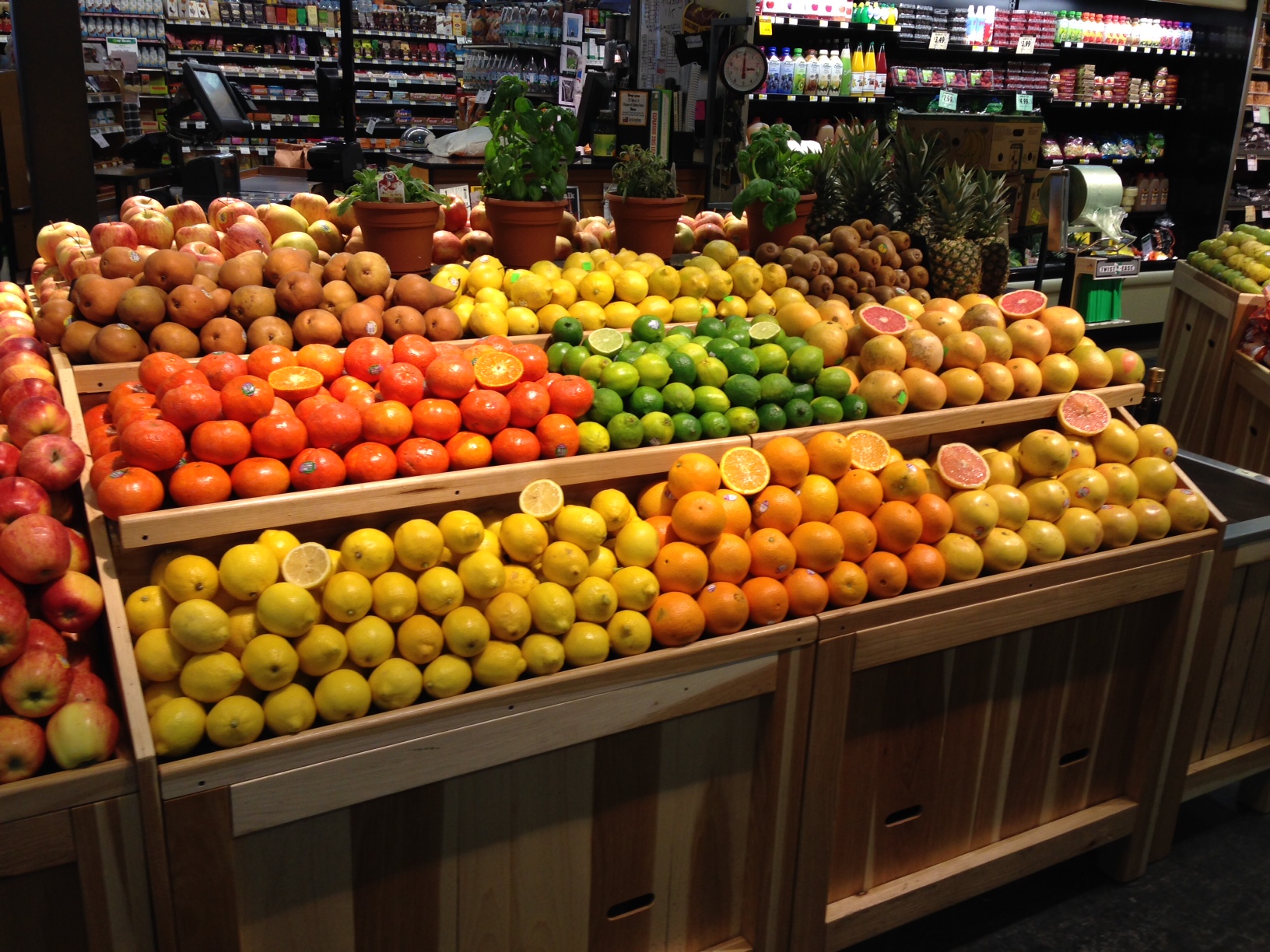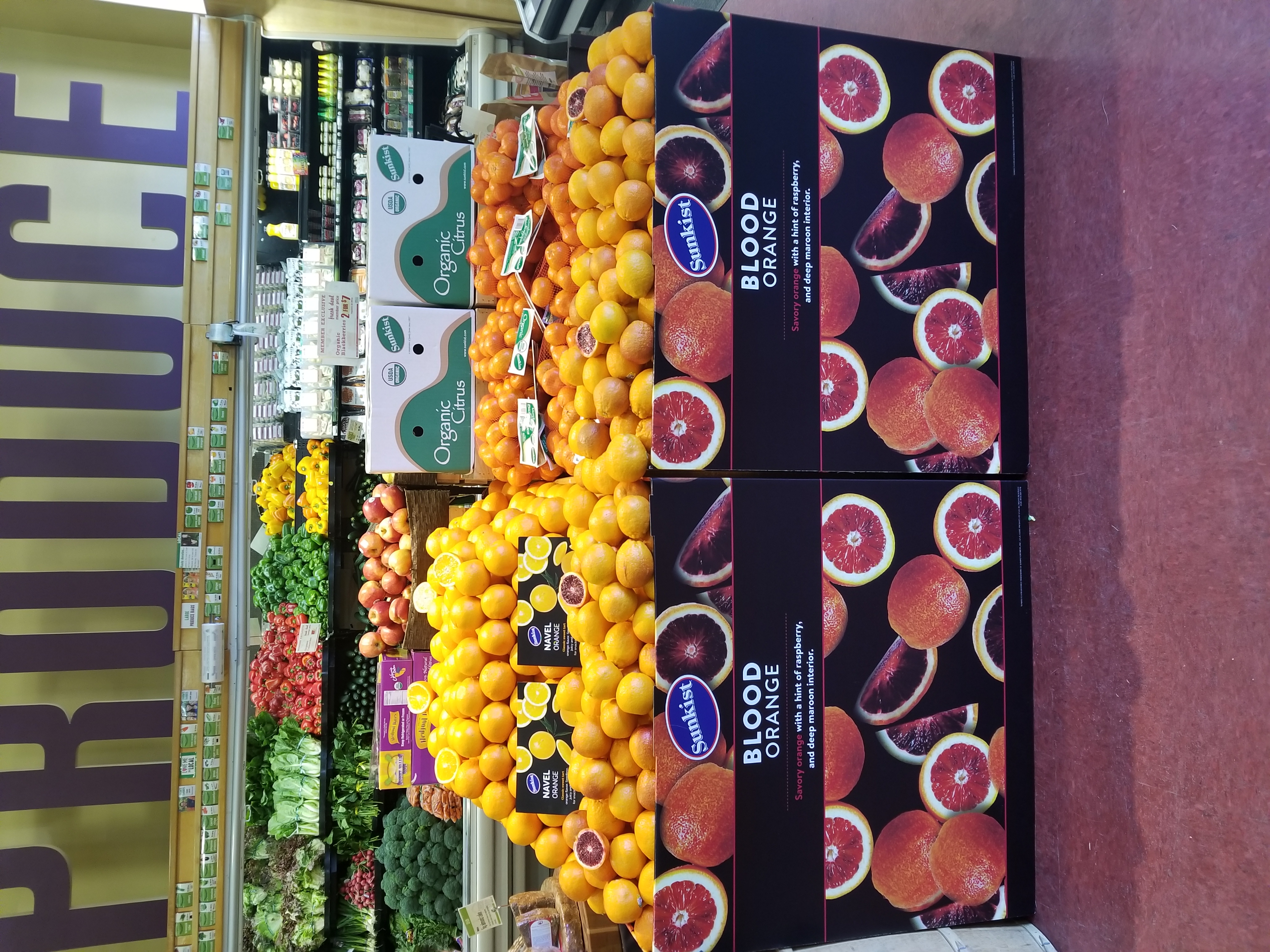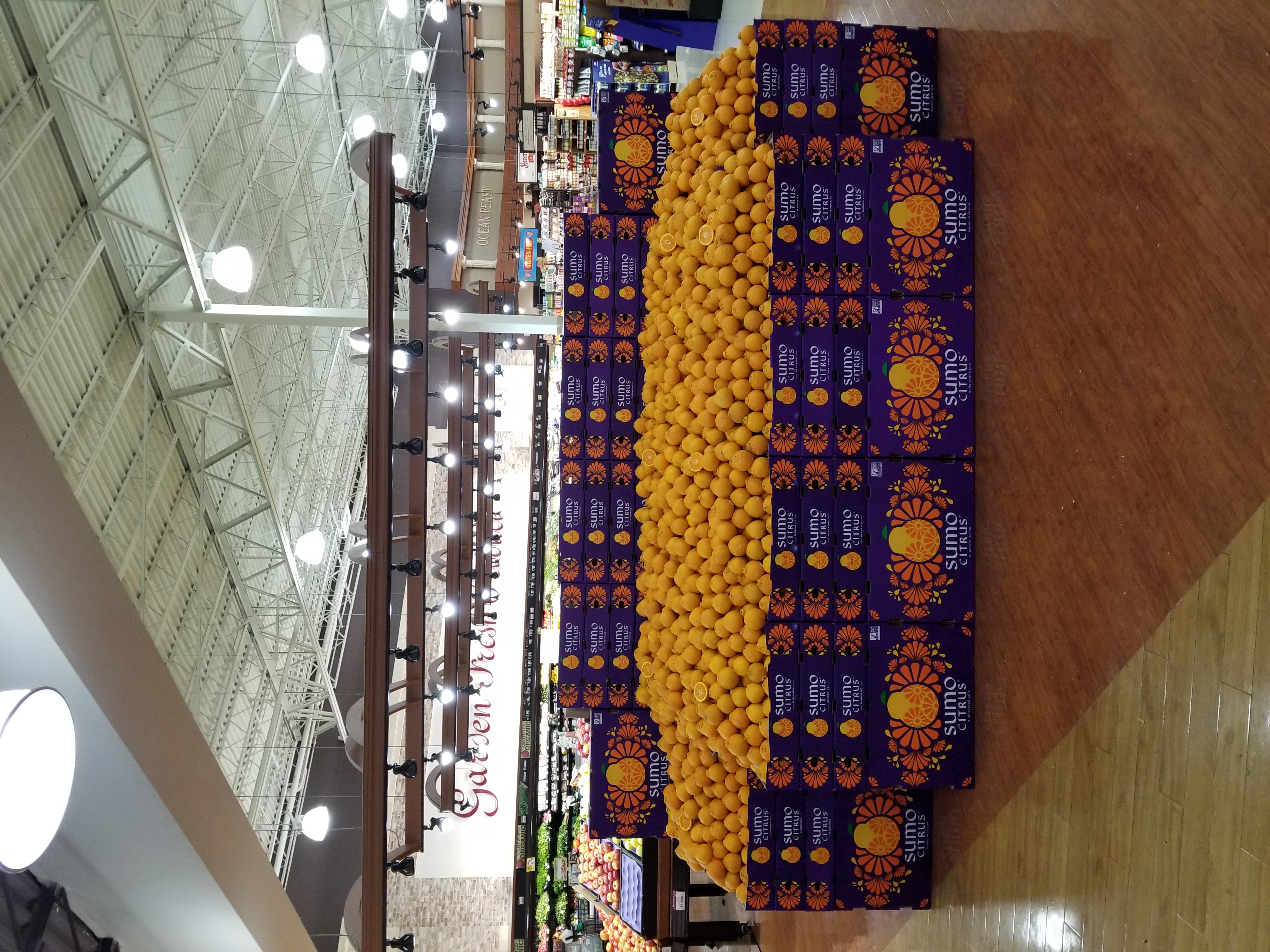Photos courtesy Brian Dey
Greetings, produce professionals!
Unbelievably, we are a week away from the Christmas holiday and nature is delivering one of the juiciest gifts of the year — fresh citrus!
What a great category to dive into as we wrap up 2020 and charge into 2021. New varieties are coming in as I write this, and I am so excited for what the winter will bring.
The citrus category really brings a produce department to life. The engaging colors and shapes of these fragrant fruits attract shoppers' eyes all by themselves.

Many customers view citrus as a healthy snack to boost the immune system, an addition to a salad, or a perfect base for their next juice, and they're all correct! Citrus is so versatile, a fit for almost every shopper.
So in the spirit of celebrating citrus, let's take a quick look at a few techniques to maximize the sales of this high-tonnage category.
Beyond the basics
As with any produce category, you want to have a nice variety for your customers, but having the right mix of citrus is critical to successful sales. Sure, navel oranges, grapefruit, lemons and limes will always be at the top of the category, but make sure to consider the myriad of citrus options that come available as the season progresses. It's with these that you might be able to grow your citrus sales far beyond your expectations.
The mandarin category (clementines, satsumas, tangos and more) has experienced huge growth and popularity among consumers. These little orange gems have different flavor profiles, and some have cultivated quite the following in recent years.

The brand names some shippers use have become synonymous with the fruit, with customers referring to the brand instead of the commodity. The marketing by these companies has done wonders for mandarin sales.
Other less mainstream varieties of citrus have also seen an increase in popularity – cara cara navels, blood oranges, Meyer lemons and pummelos – and have found their way onto more counters at retail and in consumers shopping carts.

And, for the store that has everything, and if you can find them, try out the finger limes and Buddha's hand. These unique items attract customers and build sales in the category, not to mention offer new ideas and encouragement for consumers to try something new!
Think about the evolution of the Sumo mandarin (personal fave) and how far that has come. Higher price tag, for sure, but consumers now look forward to their release just as much as they did the box clementines when I was a clerk years ago.

One thing to consider also is citrus is a big category for home juicers! Having some cool new flavors to add to juicing recipes might be a great chance to build your sales. Post some of these recipes on or next to your displays for your customers to look through, and you'll have them considering the taste of their next healthy boost of vitamin C.
What size should I carry?
Like most fruit commodities, citrus comes in sizes, and the size you choose is a matter of personal preference. For instance, some stores might choose to carry a 72-count navel exclusively, and some might choose to go with a 56-count and 88-count on their counters to target two customers and two different price points.
Every store and area is different, as is the pricing structure. I have worked in both scenarios, and the multiple-size model definitely fits the best. While most do offer citrus by the each, however, others – such as many of the organic stores – sell citrus by the pound. This allows for multiple sizing on display with the same retail.
Quick tip on pricing strategy as well is if you are selling by the count, try pricing in multiples (4/$5.00, 2/$3.00) instead of by the each ($1.25 or $1.50). Having that multiple pricing triggers a consumer's mind to buy that multiple.

But it's all the same color!
Yes, indeed it appears to be! Very similar to the apple category, a lot of citrus is either orange or yellow, and sometimes it is a challenge to differentiate them on a counter. This is where the use of color breaks within the category becomes important.
A lot of times I will tie in the pear category or even pineapples to add some color to break up the monotony, but also remember that textures and shapes add breaks for the eyes within a display as well. Also, citrus is one of the easiest categories to hand-stack and “pyramid” up if that is the style of merchandising that you prefer and teach to your associates.

Go big
For those who know me, my affinity for large displays is no secret! I believe mass merchandising draws consumers to displays and that having the right item on a sizable, eye-catching display will sell product, sometimes regardless of the price.
For a better visual of this and to see an incredible array or displays, check out the myriad of amazing display pictures seen in PMG's latest Produce Artists Award Series (shout out to Parker Christopher and Andrew Lucero for the best overall displays for fall and several others who won individual categories).
What's great is that citrus is an easy category to go big with! First of all, it's a high-tonnage category, and unlike berries or pears, it offers a bit more leniency when it comes to shrink.

Its bright, attractive colors really pop on display and, as stated above, so many marketers of fresh citrus have created great display bins and boxes to use as bases and in your display.
You can go with one commodity or build a complete monster of a display with every variety you carry. Super flexible, but with all of the same results. If you ever wanted to try to go large with a display, this is the perfect category to do it with.
What's this taste like?
So citrus, in my opinion, is the king of impulse sales when they are sampled. This still is 2020, however, and the current pandemic has sidelined the ability to offer out samples safely at retail. Who knows when, or if, sampling comes back into the mix, but that should not stop you from engaging customers safely, getting in some good mask time and talking all things citrus.
Suggestive selling is still such a powerful way to move fruit, and sharing eating experiences with customers, especially on the lesser-known varieties, is a great path to success.
One thing I like to do that is cut a piece of citrus in half and place it on the display so customers can see the flesh of the fruit. Pre-pandemic, this was a great way to hit up the visuals and smell of the fruit, as the fruity, citrusy aromas helped entice customers to buy, but with the current state we are in, it is a must that these are wrapped using clear film or plastic wrapped on a tray.

It is also a good practice now to label the cut samples as “display only” so there is no confusion on whether or not these are for sale or consumption. Even though the way it's done is different, the end result is that the customer gets to see the awesome red flesh of blood orange or the thick skin of a pummelo.
Santa sacks!
And don't forget the bags! I know, I know, I said the same thing about apples in October, but the citrus category offers those same bigger-ring opportunities.

Bagged fruit offers your customer a quick grab-and-go option and a healthy sale at the registers. Two-pound lemons, bagged limes, four-pound and eight-pound navels, five-pound grapefruit and others can be considered to bring in for your sections.
Something cool to try is doing a mixed bag of citrus at store level, packing a couple of pieces of fruit from each variety and pricing it out accordingly.
I hope these tips help you maximize your sales potential in the citrus category and motivate you to expand your horizons on variety and SKU selections. The citrus category is definitely a money-maker and one the best categories for consumers to take a chance on new varieties. The upside is repeat purchases over the following seasons and years.
As with every display and counter you set, regardless of the category, always remember the basics of blocking and tackling. Look at every opportunity to present fresh citrus to your customers through good storage, handling and merchandising and following good culling and rotational practices.
Reflecting on 2020
I would also personally like to add that, in this season of thanks and looking back on a very challenging year for everyone, I would like to thank each of you who took the time to read this column and offer feedback and share your stories.
I would also like to thank Ashley Nickle and the PMG for the opportunity to share with you some of the things that so many people have shared and passed onto me throughout the years.
It truly is an honor to be able to share the same pages as Armand Lobato, Joe Watson, Mike O'Brien, Jeff Cady, Stephen Patt and the many, many other contributors that have long been offering their perspective of retail and produce operations over the years.
I look forward to being able to offer more content to the industry and with you. Super shout out and forever grateful to my employer, Four Seasons Produce, which has put me in a position to teach, train and offer insight and guidance to our customers' businesses through retail merchandising and training.
Happy holidays and best wishes for a safe and happy New Year.
With gratitude,
Brian
Brian Dey is the senior merchandiser and natural stores coordinator for Ephrata, Pa.-based wholesaler Four Seasons Produce. He's an industry veteran with a serious passion for helping produce teams to achieve great presentation and results in their departments.
- Maximizing your apple merchandising
- Perfecting your pear merchandising
- Wet Rack Wisdom – Part 1
- Wet Rack Wisdom – Part 2
- Wet Rack Wisdom – Part 3









